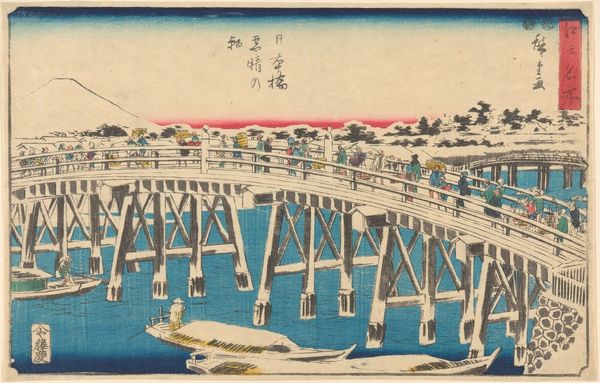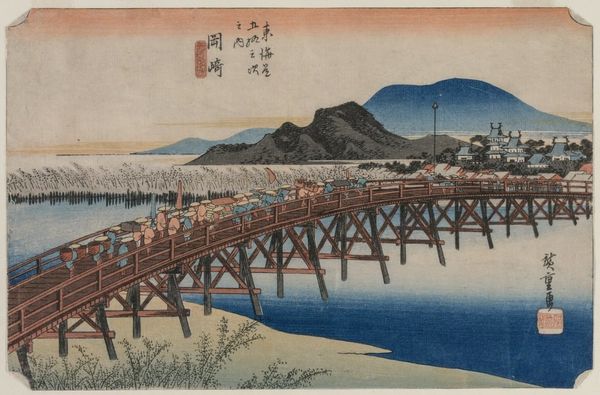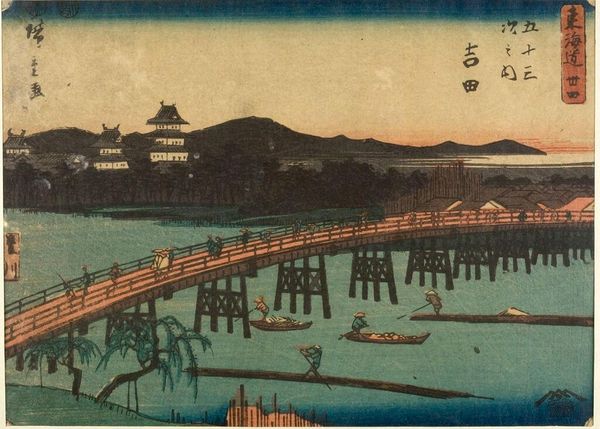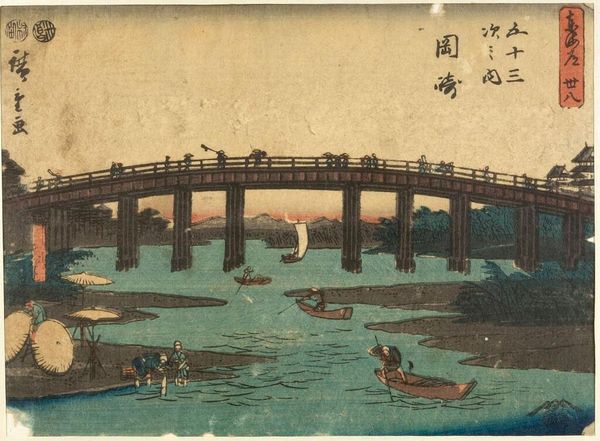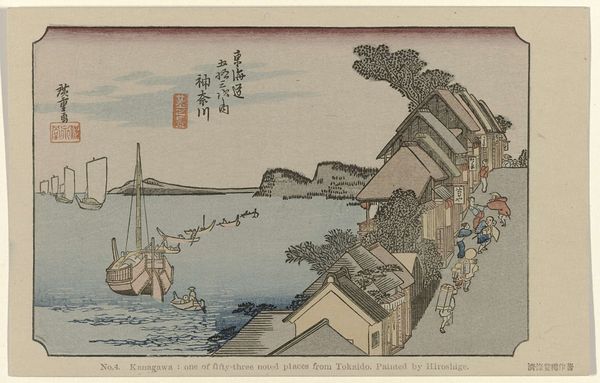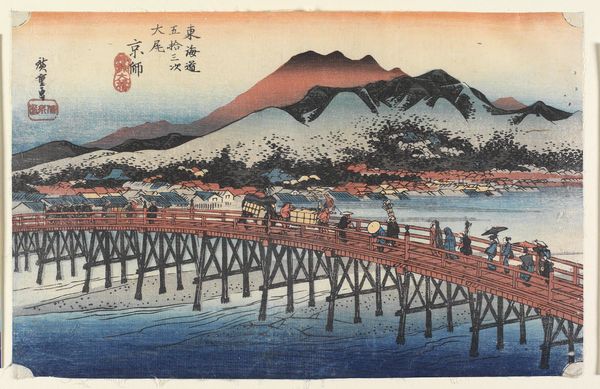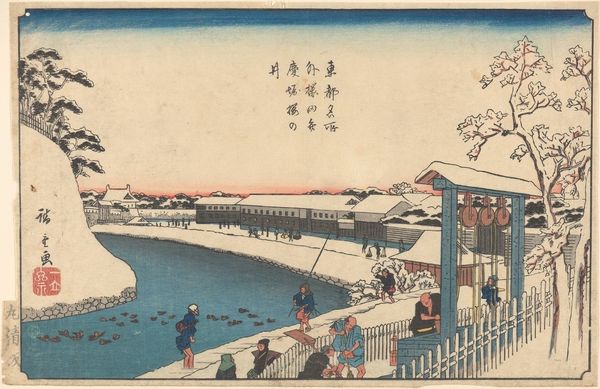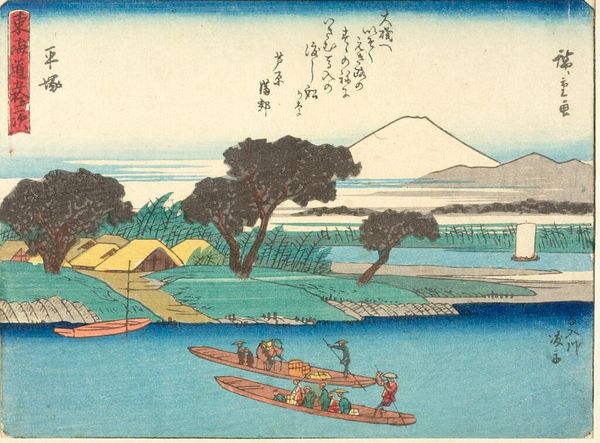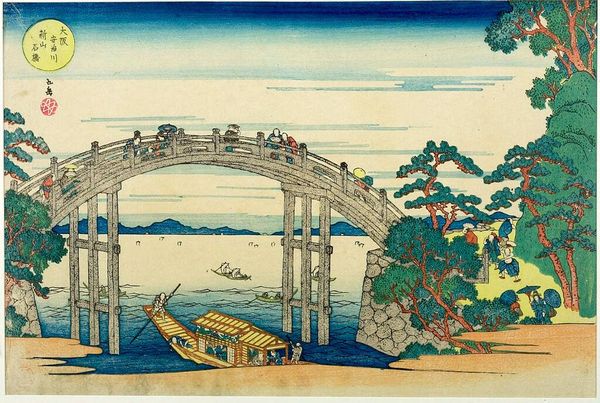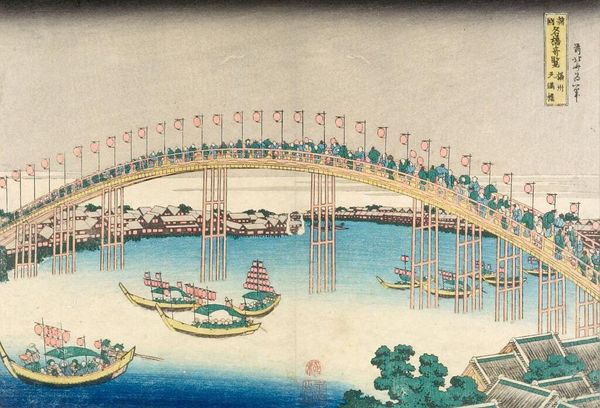
Clear Morning after Snow at Nihonbashi Bridge (Nihonbashi yukibare no asa), from the series Famous Places in Edo (Edo meisho) c. 20th century
0:00
0:00
Copyright: CC0 1.0
Curator: Look at the figures traversing the bridge – the weight of their daily lives, both literal and symbolic, etched on their backs. Editor: This is Utagawa Hiroshige's "Clear Morning after Snow at Nihonbashi Bridge" from his "Famous Places in Edo" series, showing the bustling heart of old Tokyo. The woodblock print captures a moment of quotidian life. Curator: The bridge itself is a potent symbol, isn't it? A liminal space connecting different realms, the mundane and the spiritual. It also reminds one of the floating world that artists like Hiroshige portrayed. Editor: Absolutely. And Nihonbashi was not just a physical crossing; it was the zero marker for all distances in Japan, a center of commerce and power. Its presence in art elevated and legitimized those aspects of Edo society. Curator: The soft snow, the vibrant blues...they speak to a resilience, a beauty persisting even in the face of cold, hard realities. Editor: Indeed. Hiroshige masterfully blends the aesthetic appreciation of nature with the visual documentation of Edo’s urban landscape and culture. It's a powerful combination.
Comments
No comments
Be the first to comment and join the conversation on the ultimate creative platform.
